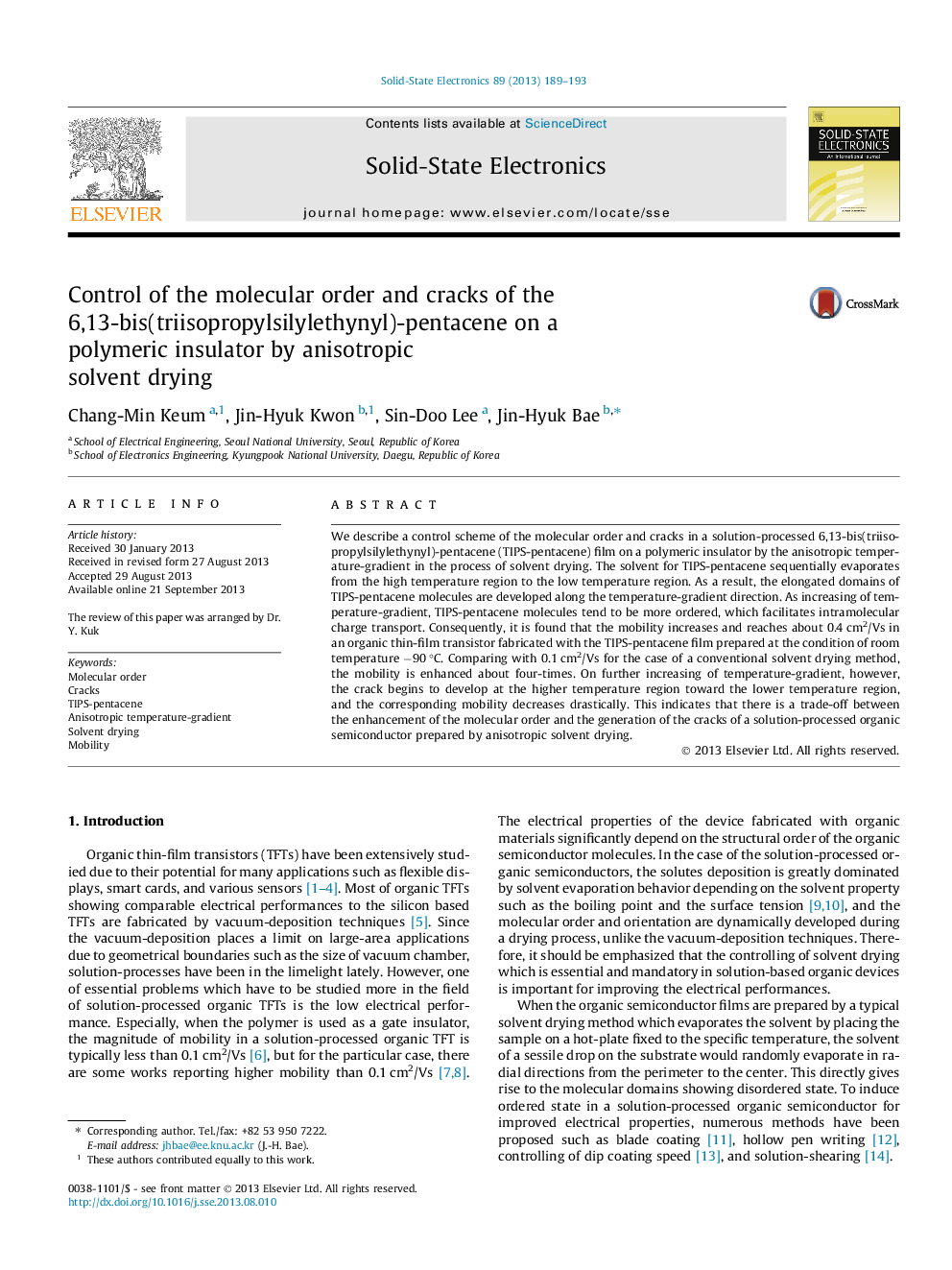| Article ID | Journal | Published Year | Pages | File Type |
|---|---|---|---|---|
| 752767 | Solid-State Electronics | 2013 | 5 Pages |
•Control scheme of the molecular order and cracks in solution-processed organic TFT.•The anisotropic solvent drying process was applied by temperature-gradient.•The effect of temperature-gradient variation on the ordering and cracks was studied.•The corresponding electrical properties and the physical mechanism were described.•The trade-off between order and cracks in organic TFT was systematically reported.
We describe a control scheme of the molecular order and cracks in a solution-processed 6,13-bis(triisopropylsilylethynyl)-pentacene (TIPS-pentacene) film on a polymeric insulator by the anisotropic temperature-gradient in the process of solvent drying. The solvent for TIPS-pentacene sequentially evaporates from the high temperature region to the low temperature region. As a result, the elongated domains of TIPS-pentacene molecules are developed along the temperature-gradient direction. As increasing of temperature-gradient, TIPS-pentacene molecules tend to be more ordered, which facilitates intramolecular charge transport. Consequently, it is found that the mobility increases and reaches about 0.4 cm2/Vs in an organic thin-film transistor fabricated with the TIPS-pentacene film prepared at the condition of room temperature −90 °C. Comparing with 0.1 cm2/Vs for the case of a conventional solvent drying method, the mobility is enhanced about four-times. On further increasing of temperature-gradient, however, the crack begins to develop at the higher temperature region toward the lower temperature region, and the corresponding mobility decreases drastically. This indicates that there is a trade-off between the enhancement of the molecular order and the generation of the cracks of a solution-processed organic semiconductor prepared by anisotropic solvent drying.
Graphical abstractFigure optionsDownload full-size imageDownload as PowerPoint slide
